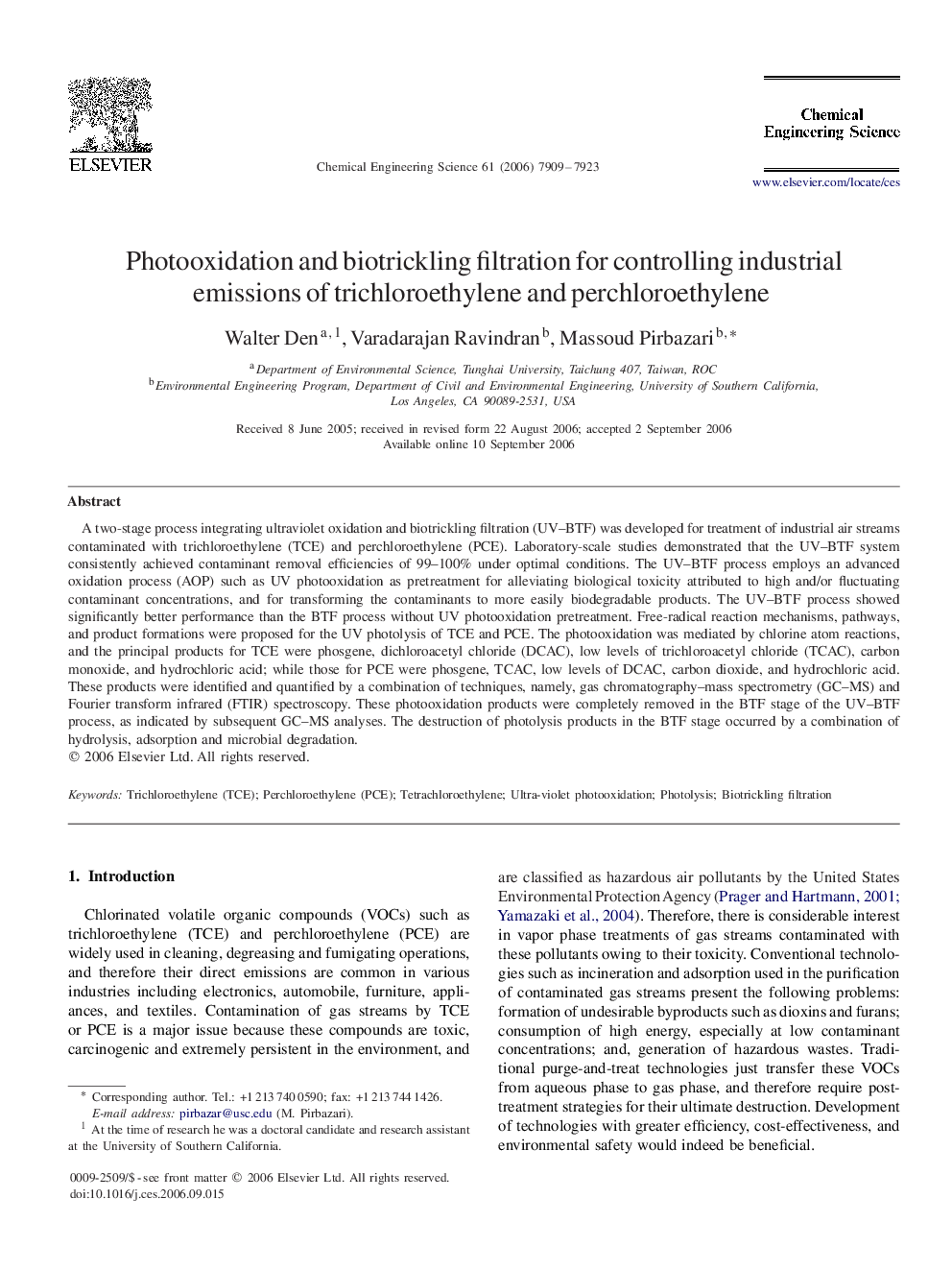| Article ID | Journal | Published Year | Pages | File Type |
|---|---|---|---|---|
| 158552 | Chemical Engineering Science | 2006 | 15 Pages |
A two-stage process integrating ultraviolet oxidation and biotrickling filtration (UV–BTF) was developed for treatment of industrial air streams contaminated with trichloroethylene (TCE) and perchloroethylene (PCE). Laboratory-scale studies demonstrated that the UV–BTF system consistently achieved contaminant removal efficiencies of 99–100% under optimal conditions. The UV–BTF process employs an advanced oxidation process (AOP) such as UV photooxidation as pretreatment for alleviating biological toxicity attributed to high and/or fluctuating contaminant concentrations, and for transforming the contaminants to more easily biodegradable products. The UV–BTF process showed significantly better performance than the BTF process without UV photooxidation pretreatment. Free-radical reaction mechanisms, pathways, and product formations were proposed for the UV photolysis of TCE and PCE. The photooxidation was mediated by chlorine atom reactions, and the principal products for TCE were phosgene, dichloroacetyl chloride (DCAC), low levels of trichloroacetyl chloride (TCAC), carbon monoxide, and hydrochloric acid; while those for PCE were phosgene, TCAC, low levels of DCAC, carbon dioxide, and hydrochloric acid. These products were identified and quantified by a combination of techniques, namely, gas chromatography–mass spectrometry (GC–MS) and Fourier transform infrared (FTIR) spectroscopy. These photooxidation products were completely removed in the BTF stage of the UV–BTF process, as indicated by subsequent GC–MS analyses. The destruction of photolysis products in the BTF stage occurred by a combination of hydrolysis, adsorption and microbial degradation.
